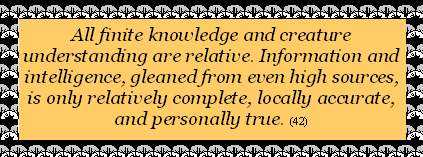|
For the continental drift story of the Urantia Papers, the major "prophetic" item is the actual starting date for drift, given as 750 million years ago. (P.663)
As his starting date for drift, Wegener had suggested 200-300 million years ago, a view that remained dominant until the 1980's when the commencing date was pushed back to 500 million years or more. A recent estimate actually coincides exactly with the 750 million years given in Urantia Paper 57.
[Note: Up to the discovery and use of the zircon techniques, geological dating of this kind was by no means an exact science. Where modern technology is used, it can be so.]
If the authors of the Urantia Papers were human, we need an explanation of how they were able to come up with their extraordinary concepts on the timing of the continental drift phenomenon. A then-discredited Wegener put 200 million years as the start of break-up of a super-continent, the Urantia Papers' authors put it at 750 million years, and it appears that both are correct, the explanation being that the super-continent reformed, then broke up a second time. Wegener had some evidence to support his ideas. There appears to have been absolutely no evidence whatever to support the 750 million years breakup at the time the Urantia Papers were written or published.
A lucky guess seems to be the only alternative. But the odds against guessing correctly are enormous.
References
Le Grand, H.E. "Drifting Continents and Shifting Theories." (Cambridge University Press, 1988)
Encyclopedia Britannica (CDRom edition)
Continental Drift--2.
The prophetic nature of The Urantia Book's account of continental drift and some of its consequences have now received approval in a book by professor of geology, M.A.S. McMenamin, entitled "The Garden of Ediacara," reported by Larry Mullins in the recent "Spiritual Fellowship Journal." The following quotes coming from McMenamin's book followed upon that author having his attention drawn to The Urantia Book's content:
"The anonymous members of the Urantia Corps hit on some remarkable scientific revelations in the mid-1930's. They embraced continental drift at a time when it was decidedly out of vogue in the scientific community. They recognized the presence of a global super-continent (Rodinia) and superocean (Mirovia), in existence on Earth before Pangea...The concept of a billion year old supercontinent (the currently accepted age for the formation of Rodinia) that subsequently split apart, forming gradually widening ocean basins in which early marine life flourished, is unquestionably present in the book.
"Orthodox scientific arguments for such a proposal did not appear until the late 1960's, and a pre-Pangea supercontinient was never described until Valentine and Moores made the attempt in 1970. The Urantia Corps not only had the age of formation of Rodinia approximately correct at 1 billion years, but they were the first to link breakup of Rodinia to the emergence of animals...One wonders how the Urantia Book authors arrived at the concept of a Proterozoic supercontinent and the link between the breakup of this supercontinent and the emergence of complex life in the ensuing rift oceans 30 years before most geologists accepted continental drift--and nearly four decades before any scientist had any inkling that Rodinia existed."
So why this strange mixture of highly prophetic material set in a background of early 1900's science and cosmology that has since become outdated or untenable?
We can only guess at the truth. Being aware that much of this material is a component of a "universe frame" that provides a background in which we can fit the kind of universe career set out for us ascending mortals by the revelators may be helpful for some. The necessity for such a "frame-in-which-to-think" is suggested in:
"Partial, incomplete, and evolving intellects would be helpless in the master universe, would be unable to form the first rational thought pattern, were it not for the innate ability of all mind, high or low, to form a universe frame in which to think. If mind cannot fathom conclusions, if it
|
|



